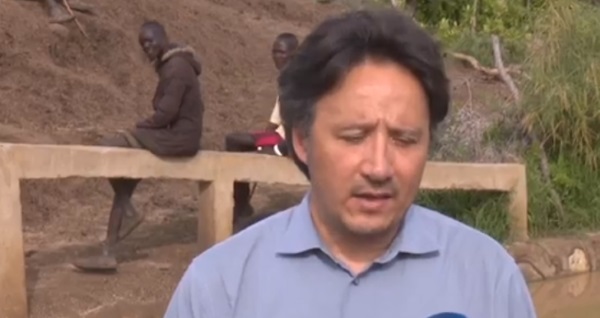Despite initiatives over the past few years, the Karamoja region has consistently scored poorly on all human development indexes. 82% of the region’s population lives below the poverty line and 11% of Karamoja’s malnutrition level is significantly higher than the national average of 6%. The region is also very food insecure as a result of environmental and cultural reasons. It is against this background that the 5-year Karamoja Food Security and Ecosystems Resilience Project was launched. “A lot of money has been going in and I want to start off by first of all thanking the government of Uganda because through its co-financing they are putting in 45 million USD, UNDP will be putting in 13 million USD, and the GEF Fund is putting 7 million USD.” Said, Rosa Malango – UN Resident Coordinator. “And hopefully this project is going to provide action framework and action on the ground that will be scaled up by different partners.” Said, Jean-Marc Sinnassamy – Senior Environmental Specialist, GEF.
The project which is funded by the Global Environmental Facility and co-financed by the Office of the Prime Minister and Ministry of Agriculture is intended to fight food insecurity in Karamoja. “Given the fact that they are mainly cattle rearing people, this means that the lack of water, the lack of pasture can affect the health of their cattle. This also affects the livelihoods of their families.” Said, Priya Gujadhur – Deputy Country Representative, FAO. The project is designed to increase production and diversification of livelihoods options. “So, one is started thinking about how can we bring in value addition? And so this project allows us to build upon that and bring in value addition. We were shown bees, honey, and wax that can further go into candle making. So how do you make sure there value addition and the associated jobs.”
While launching the program, the Moroto District Chairperson Andrew Napaja urged the government to promote mechanization of agriculture in the region in order to increase productivity. “We are supposed to plough 200 acres per Sub County to improve and increase food production. In Moroto, there is not even one single tractor. Now what we do we go to Sebei, Bagisu and Itesot they have a lot of tractors or even go to Kenya. We bring those tractors, but for them again; they will tell you to wait we have not finished our gardens and they dig as the rains are going. Then when they bring, the rain has stopped.” Said, Andrew Napaja – Moroto District Chairperson.
The majority of Karamoja’s residents are pastoralists and they still face the problem of livestock diseases. “Even when we do a lot of vaccination on our side of the border, the livestock from across most times are not vaccinated. Now that takes back to square one even when you have vaccinated our own livestock.” Said, Michael Lokero – FAO Representative, Karamoja. The Minister of Agriculture, Animal Husbandry Fisheries Vincent Ssempijja said efforts were being made to introduce new breeds of animals and crops to the region. “We want to organize our farmers into farmer organizations, very conscious farmer groups that are able to create knowledge among the members but also have peer pressure among the members to produce quality food crops and animals.” Said, Vincent Ssempijja – Minister of Agriculture. “I feel that the government should come at the forefront to help their women in order to sustain food security in their households.” The Karamoja sub-region is a semi-arid area with an average family size of seven people and 21% of the households in the region are female-headed. It is also part of the cattle corridor of Uganda which is characterized by low and unreliable rainfall.

